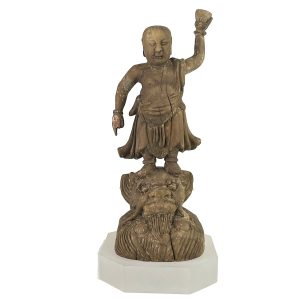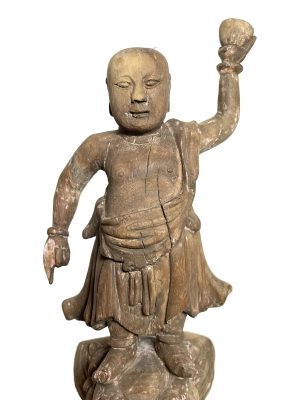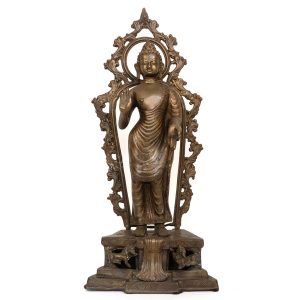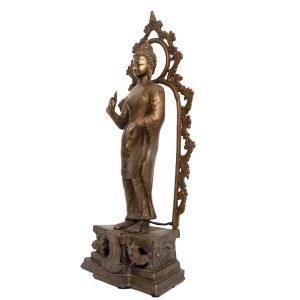Ming/Qing Buddha as an Infant on a Lion, China (19405)
Original price was: $750.00.$575.00Current price is: $575.00.H: 9″ W: 3.625″ D: 3.5″ | FREE SHIPPING IN CONTINENTAL U.S.
Ming provincial infant Buddha holding monk’s begging bowl, pointing to heavens standing on a lion’s head symbolizing the Shakya clan and the lion’s roar of Buddhism. Buddha images seldom placed in homes and blended iconography as an infant, is extremely rare.




